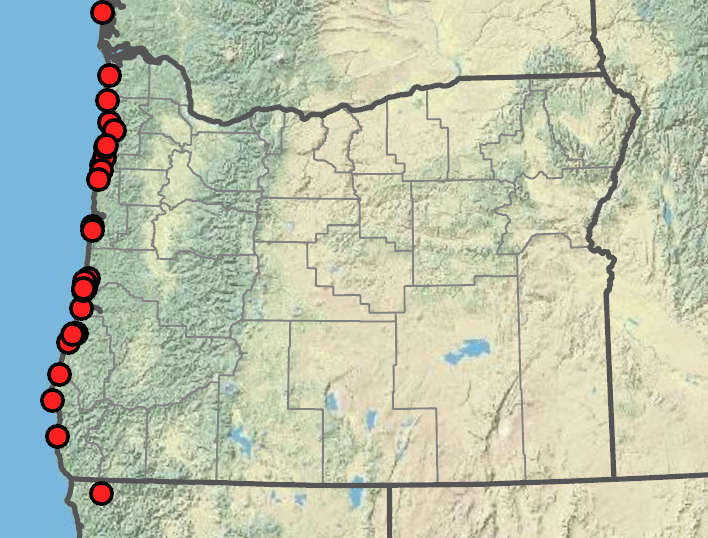Poa douglasii
Poa confinis
coastline bluegrass
slender;
nodes terete, 0–1 exserted.
mainly intravaginal; some extravaginal.
sheaths closed 33–50% of their length; smooth, bases of basal sheaths glabrous;
collars smooth, glabrous;
ligules 0.5–1.5(2.2) mm, blades of tillers with upper surface moderately to densely scabrous or very short-hairy on and between the veins;
cauline blades involute, mostly filiform, 0.5–1(1.5)mm wide;
lower surfaces smooth;
upper surfaces sparsely scabrous on and between the veins; uppermost blade (0.5)1–5 cm long.
erect; ovoid, moderately to loosely congested, 1–5(7)cm;
spikelets fewer than 50;
branches erect to ascending, slightly lax, 0.5–3 cm, 1–2 per node.
to 3 times as long as wide; compact, 3–6(8)mm;
florets 2–5;
rachilla internodes glabrous or sparsely softly puberulent.
slightly unequal;
keels smooth or scabrous;
lower glumes 2–4 mm long, 1–3-veined; about 67% as long as the lowest lemma;
upper glumes 2.9– 5 mm long.
perennial; g ynodioecious, 7–30(35)cm tall, densely to loosely tufted, rhizomatous and stoloniferous;
rhizomes and stolons to 100 cm long.
with sparse; diffuse; cobwebby hairs 1–2 mm, infrequently glabrous.
lanceolate, 2.5– 4(4.5)mm, distinctly keeled, moderately to densely finely scabrous, glabrous throughout or keels and sometimes marginal veins proximally sparsely softly puberulent;
margins narrowly scarious;
tips acute.
vestigial and 0.1–0.2 mm or functional and 1.5–2 mm.
Poa douglasii
Poa confinis
Coastal sand dunes and stabilized sandy soil, occasionally edges of coastal forests. 0–50m. Est. CA, WA; north to British Columbia. Native. 2n=42.
Poa confinis is a rhizomatous grass that often puts up shoots in clusters. It grows in coastal sandy habitats. Poa macrantha grows in the same habitat but has much larger lemmas and inflorescences. Poa pratensis has long hairs on the lemma keels and marginal veins and cobwebby callus hairs that arise as a tuft on the dorsal surface, sometimes also with two additional tufts by the marginal veins.
Rob Soreng, Barbara Wilson, Richard Brainerd, Nick Otting
- Local floras:
BC,
CA,
OR,
WA
- Local Web sites:
CalFlora,
CalPhotos,
Flora NW,
PNW Herbaria
WildflowerSearch
iNaturalist (observations)
USDA Plants Database
- LBJ Wildflower Center
- SEINet
- Plants of the World Online
- Encyclopedia of Life
- Wikipedia
- Google Image Search


